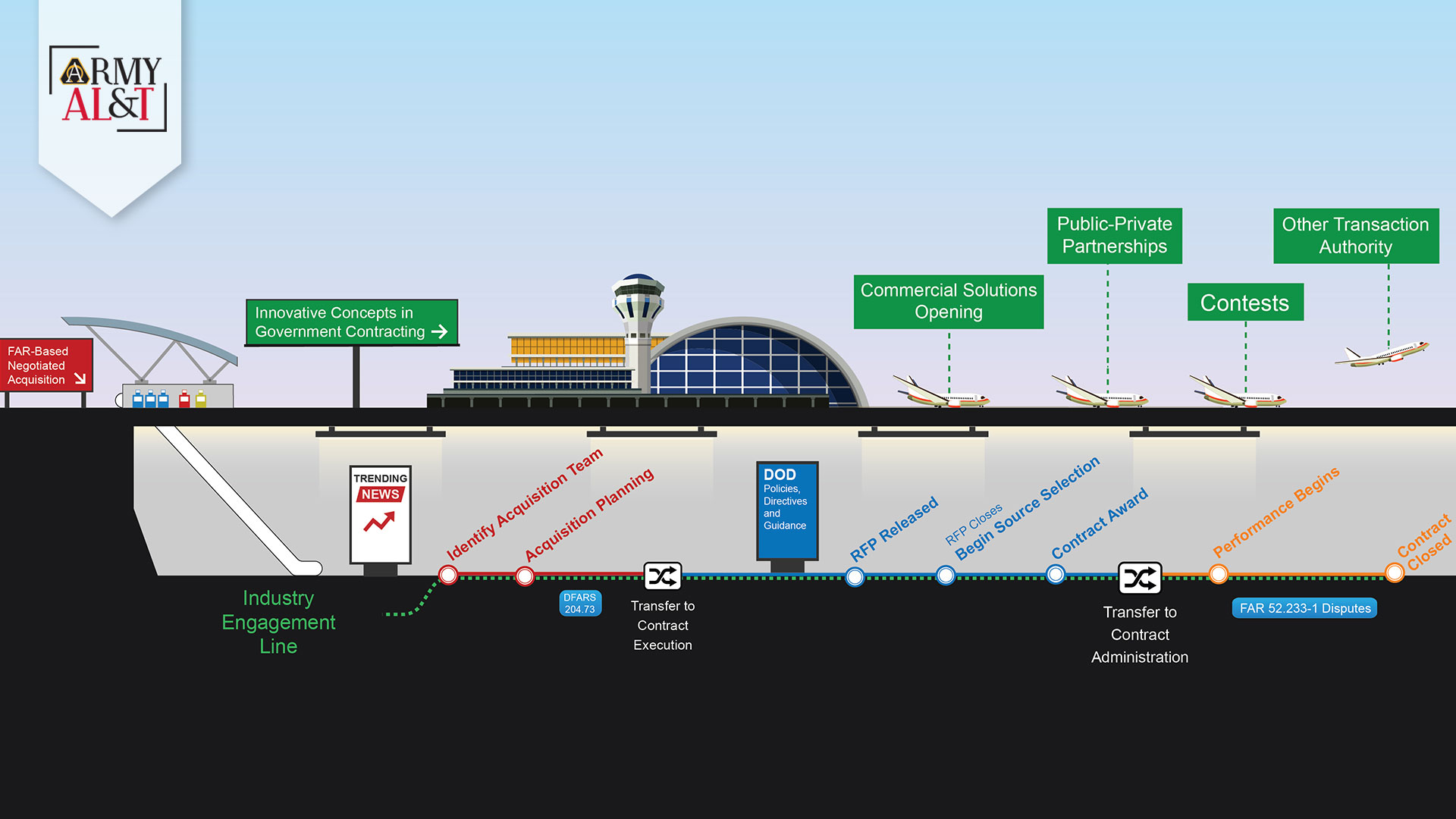
Career Navigator
DAU’s handy-dandy subway map helps make it easier to understand contracting and find the right tool.
By Jacqueline M. Hames
It’s easy to get lost in the byzantine process known as DOD acquisition. It often seems that there are countless ways to acquire goods and services, countless contract types and an inconceivable number of rules and regulations to keep in mind. Defense Acquisition University’s (DAU) Michelle M. Currier has created DAU’s Contracting Subway Map to help make sense of it all.
“Everybody in acquisition needs to know where they are,” said Currier, a professor of contract management at DAU, because one person’s decisions will affect the whole of the process. “We need to get people thinking about not just themselves [and where they are in the process], but the big picture,” she said. The map helps students, acquisition professionals, leadership—anyone—get a picture of how the whole acquisition process fits together and be better educated on why the process is the way it is.
In fact, that’s why Currier initially developed the map: to help her DAU students understand the why behind the many steps of the acquisition process, she said. The map started in 2016 as a magic-marker drawing on unwieldy butcher block paper—one that Currier drew in her living room and carried around for almost two years, redrawing it whenever it became too tattered, before it was finally digitized in 2018 as users see it now.
Divided into two parallel modes of transportation, the map visualizes the steps for the Federal Acquisition Regulation (FAR)-based process (trains) and the non-FAR-based process (planes), Currier said. Each stop along each line represents a step in the process and is labeled with information icons and numbered icons. The numbered icons link to FAR citations for quick reference. The map is further color-coded to represent the different acquisition efforts: The orange line is for contract administration, the red is for acquisition planning and the blue is for contract execution. The green line indicates places for industry engagement, which is extremely important to acquisition, Currier said. “We want to include industry at every single phase of the process.”
The map brings users focused information on a topic when they need it through an information link—a blue icon labeled with an “I”. These links take users to lists of regulations, best practices, templates, mythbusting, examples and a wealth of other information related to the acquisition process, Currier explained. The references icons are linked directly with websites that contain the topic information, and are therefore updated when a parent organization updates the website. Currier can also update the map in real time with suggestions from users—which she encourages them to send in—or with new and trending information related to acquisition.
The primary method of acquisition is the FAR-based process, Currier said. But with technologies changing so fast, the Army doesn’t have time for that anymore. It’s now looking to a non-FAR-based process, like other transaction authority. Currier believes it is her job to get everyone to think critically about the different tools the Army has in acquisition.
“You have to look at the tool for what you’re trying to buy,” she said, and “select the appropriate tool that takes into consideration the risk, the time we have to solve the problem, to make sure we have the best risk management profile to get the products and services to the warfighter.” The map will help users learn to select the appropriate acquisition tool.
While the map is not a larger part of the decluttering of the acquisition process, it is a picture of how the process works today and will change to reflect how the process changes over time, Currier said. “It’s not meant to be the end-all to everything; it is meant to be a jumping-off place” where users can get the information they need at a moment’s notice.
For more information, go to https://www.dau.mil/tools/t/Subway-Map. If you have suggestions on how to improve the map, submit them to SubwayMap@DAU.mil.
This article is published in the January – March 2019 issue of Army AL&T magazine.
Subscribe to Army AL&T News – the premier online news source for the Army Acquisition Workforce.
![]() Subscribe
Subscribe







